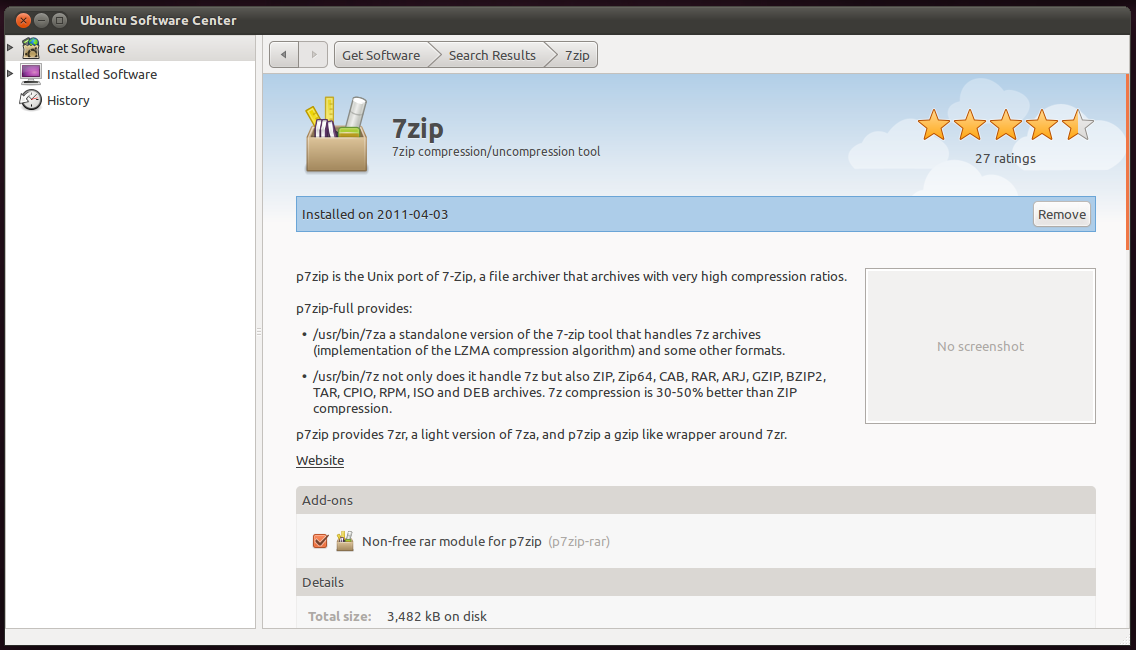

The -si option will read from standard input. We will use tar to create a backup, then compress it with 7-Zip. $ 7z a -mhe=on -pmy_password my_archive.7z sample_fileħ-Zip can be used to back up a directory, but should be used in conjunction with the tar command in order to preserve the owner and group data, and file permissions.Įxample 1. Place it after the -p option, but don’t put a space. The less recommended option is to specify the password in your 7-Zip command. $ 7z a -mhe=on -p my_archive.7z sample_fileĮxample 2. The -mhe option will turn on header and data encryption (highly recommended), and the -p option instructs 7-Zip to prompt us for a password to protect the archive with. 7-Zip uses AES-256 encryption by default. $ 7z x my_archive.7z -o /path/to/destinationĮxample 1. If you want to designate the place where the decompressed files go, use the -o flag. When you want to decompress a 7-zip archive, use the x flag. The above command uses compression level 7. Level 0 means no compression, and level 9 means ultra compression. A higher level will yield better compression ratio, but will also take longer to compress and decompress. There are various levels (0, 1, 3, 5, 7, 9) of compression that you can use with the -mx flag. $ 7z a my_archive.7z file1 file2 dir1/ dir2/Įxample 4. Specify as many files or directories as you want, and they will all be compressed into the single archive. You can also compress a directory: $ 7z a my_archive.7z /path/to/sample_files/Įxample 3. $ 7z a my_archive.7z sample_fileĮxample 2. If an archive by the specified name doesn’t exist, it will be created. When you compress a file, you have to put a and an archive file name as follows. Now that 7-Zip is installed, let’s see how to compress some files.Įxample 1. Ubuntu, Debian, and Linux Mint: $ sudo apt install p7zip-fullįedora, AlmaLinux, Rocky Linux, Red Hat, CentOS: $ sudo dnf install p7zip*Īrch Linux and Manjaro: $ sudo pacman -S p7zip Use the appropriate command below to install 7-Zip with your Linux distro’s package manager. In this tutorial, you will see how to install 7-Zip on various Linux distributions and learn to use 7-Zip commands to perform compression and decompression of files and directories on the Linux command line. 7-Zip can also encrypt your compressed archives with AES-256. Although you can already compress files by using the tar and zip commands, 7-Zip can outperform other compression technologies in terms of compression ratio, as shown in our benchmark tests for the best compression tool in Linux. 7-Zip is free software for compressing/decompressing files.


 0 kommentar(er)
0 kommentar(er)
